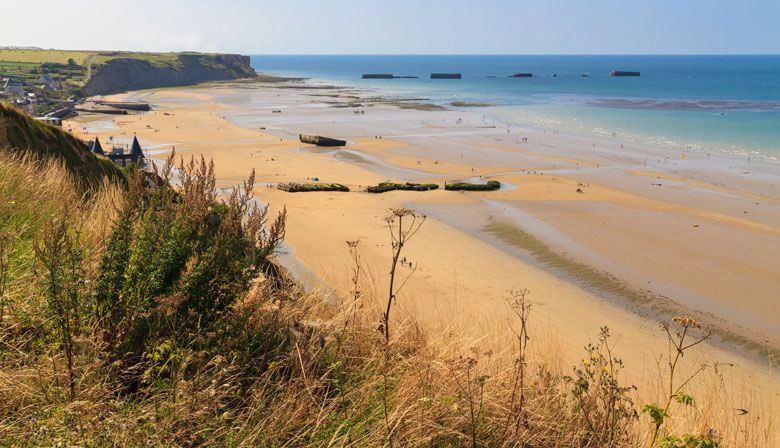The Notre-Dame of Rouen Cathedral

This cathedral has been standing for 5 centuries in the administrative center of Seine-Maritime. It was significantly destroyed during WWII; a 1940 fire ravaged the historic center and Royal Air Force bombings in 1955 heavily damaged the cathedral, as well as the courthouse. In fact, the period of bombing called “the Red Week” caused the deaths of 3,500 people. Nine-thousand five-hundred buildings were razed and 30,000 people lost their homes.
History of the Cathedral
The Rouen Cathedral is a religious monument constructed in two phases with two distinct styles: starting in 1030 for its Roman-inspired section and in 1145 for its Gothic-inspired one. It was completed in 1506. The edifice has enjoyed the title of Historical Monument since 1862. It must be noted that the remains of King Richard the Lionheart lie in the Cathedral.
At 151 meters high and 144 meters long, it is the highest (and asymmetrical) cathedral in France since the reconstruction of its cast iron spire in 1876. The edifice is also internationally known thanks to a series of 30 impressionist paintings by French painter Claude Monet, in love with Normandy.
A Gothic Architectural Masterpiece
The Notre-Dame Cathedral in Rouen borrows inspiration from a Roman-styled building that dates from the 20th century. Despite ongoing renovations of the gothic cathedral’s gable roof, the former church’s crypt is open to the public. Legend has it that the cathedral houses relics of the Virgin Mary.
Renovations of the gothic cathedral began in the 12th century following completion of the Saint-Roman tower in 1185. The edifice was then raised, the choir lengthened, and the crypt filled in. These parts of the edifice were discovered thanks to contemporary archeological digs. The chapels, stained-glass windows, and 60 statues on the cathedral’s facade were added during the 15th century, thus contributing to yet another new look for the cathedral.
The Centerpiece of Life in Rouen
Located in Rouen’s downtown, the cathedral is near emblematic sites in the Seine-Maritime region. Every year, the cathedral’s forecourt is home to the Christmas market.
The neighborhood is noteworthy for its ancient homes, 2,000 of which are half-timbering homes (homes made with timber posts). The Gros-Horloge (Big Clock), built in 1389, links the cathedral to the Vieux Marché Square and is a must-see. This astronomical clock is now a historical monument that houses a museum with a clockmaker’s workshop. In fact, the pedestrian zone located between the Gros-Horloge and the Vieux Marché is highly appreciated by inhabitants and tourists alike. Why? It’s also a place where foodies can buy regional specialities like the Macaron de grand’mère Auzou (Grandma Auzou’s Macaroon), a tasty treat made with apple and salted-butter caramel. Once you’ve nibbled on a macaron, you can now make your way to the Big Clock.
Another WWII Victim

The war was not kind to the cathedral. In 1940, a fire damaged a part of the cathedral’s structural framework. In 1944, the monument would undergo even more significant damages. Allied bombings hit the cathedral, destroying its nave and rendering more fragile an already weakened edifice that struggled to hold up its spire whose columns were ruined. Reinforcement work was quickly undertaken to prevent the spire from crumbling onto the rest of the cathedral. However, fires would cause the bell towers to fall and the nave to be completely destroyed. The fighting ended on August 30, 1944, when the German army retreated. Like the city of Saint Malo, The Rouen Cathedral was severely dammaged by bombs.
Renovation
Restoration work was undertaken to prepare the way for reconstruction of the cathedral, which reopened in 1956. The work was long and tedious as only once the entire cathedral was stable, workers then had to repair deterioration caused by erosion and pollution.
Unfortunately, on December 26, 1999, the cathedral was again victim but this time of a winter storm. There was thus a new wave of work to be done during the first decade of the 21st century; reparation and consolidation of the cathedral’s framework, roof, flying buttresses, and bell towers.


